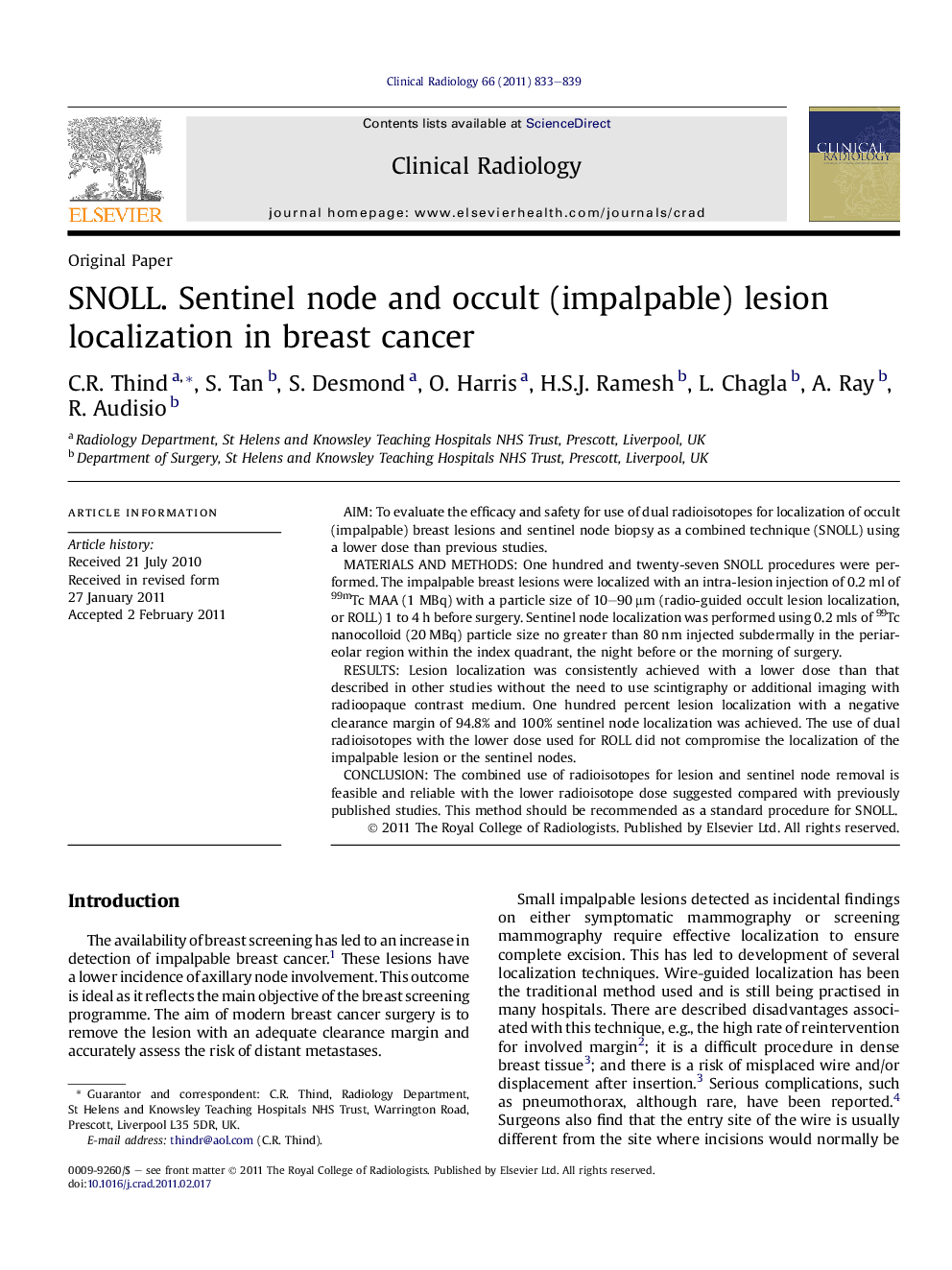| Article ID | Journal | Published Year | Pages | File Type |
|---|---|---|---|---|
| 3982511 | Clinical Radiology | 2011 | 7 Pages |
AimTo evaluate the efficacy and safety for use of dual radioisotopes for localization of occult (impalpable) breast lesions and sentinel node biopsy as a combined technique (SNOLL) using a lower dose than previous studies.Materials and methodsOne hundred and twenty-seven SNOLL procedures were performed. The impalpable breast lesions were localized with an intra-lesion injection of 0.2 ml of 99mTc MAA (1 MBq) with a particle size of 10–90 μm (radio-guided occult lesion localization, or ROLL) 1 to 4 h before surgery. Sentinel node localization was performed using 0.2 mls of 99Tc nanocolloid (20 MBq) particle size no greater than 80 nm injected subdermally in the periareolar region within the index quadrant, the night before or the morning of surgery.ResultsLesion localization was consistently achieved with a lower dose than that described in other studies without the need to use scintigraphy or additional imaging with radioopaque contrast medium. One hundred percent lesion localization with a negative clearance margin of 94.8% and 100% sentinel node localization was achieved. The use of dual radioisotopes with the lower dose used for ROLL did not compromise the localization of the impalpable lesion or the sentinel nodes.ConclusionThe combined use of radioisotopes for lesion and sentinel node removal is feasible and reliable with the lower radioisotope dose suggested compared with previously published studies. This method should be recommended as a standard procedure for SNOLL.
